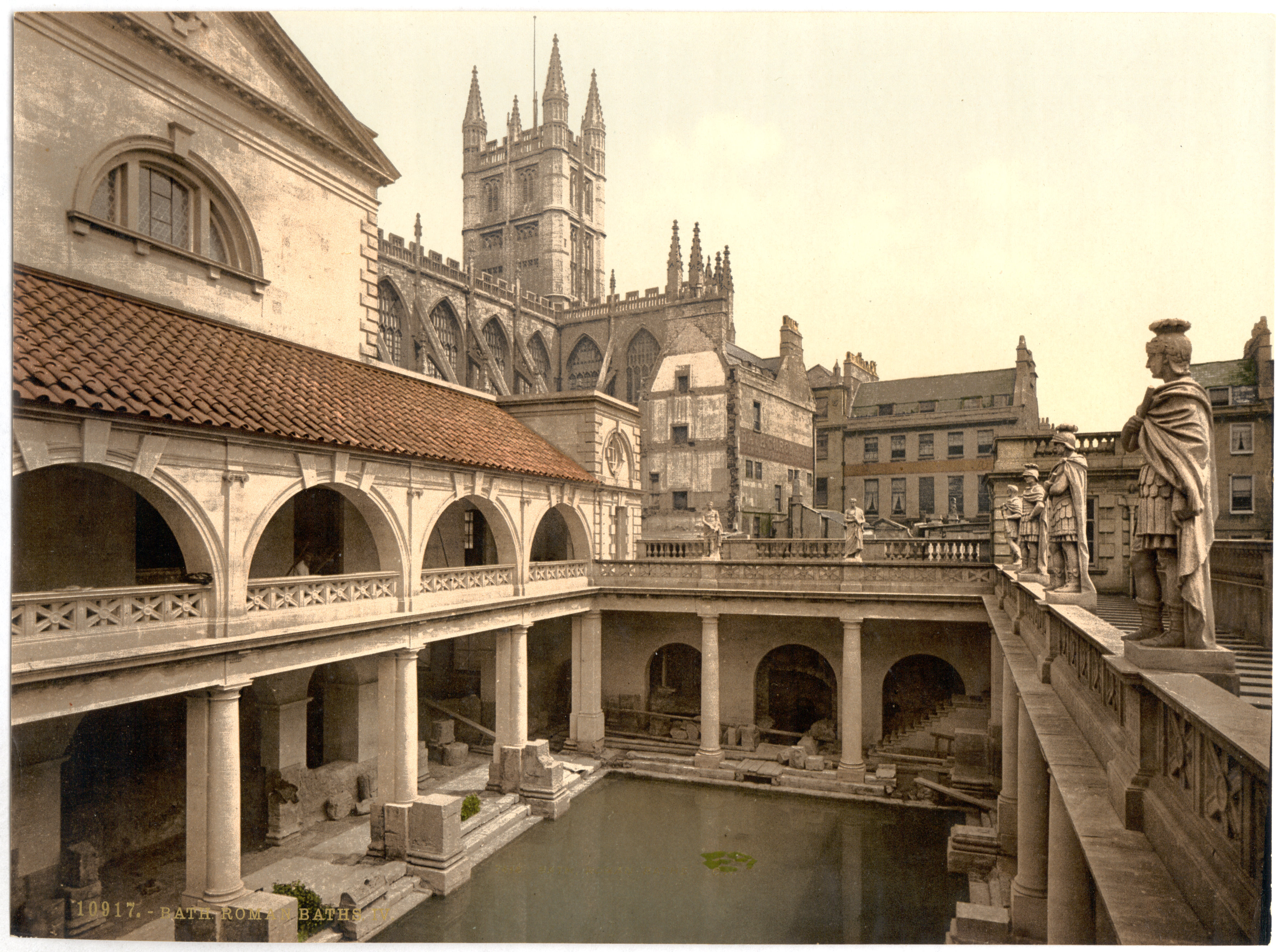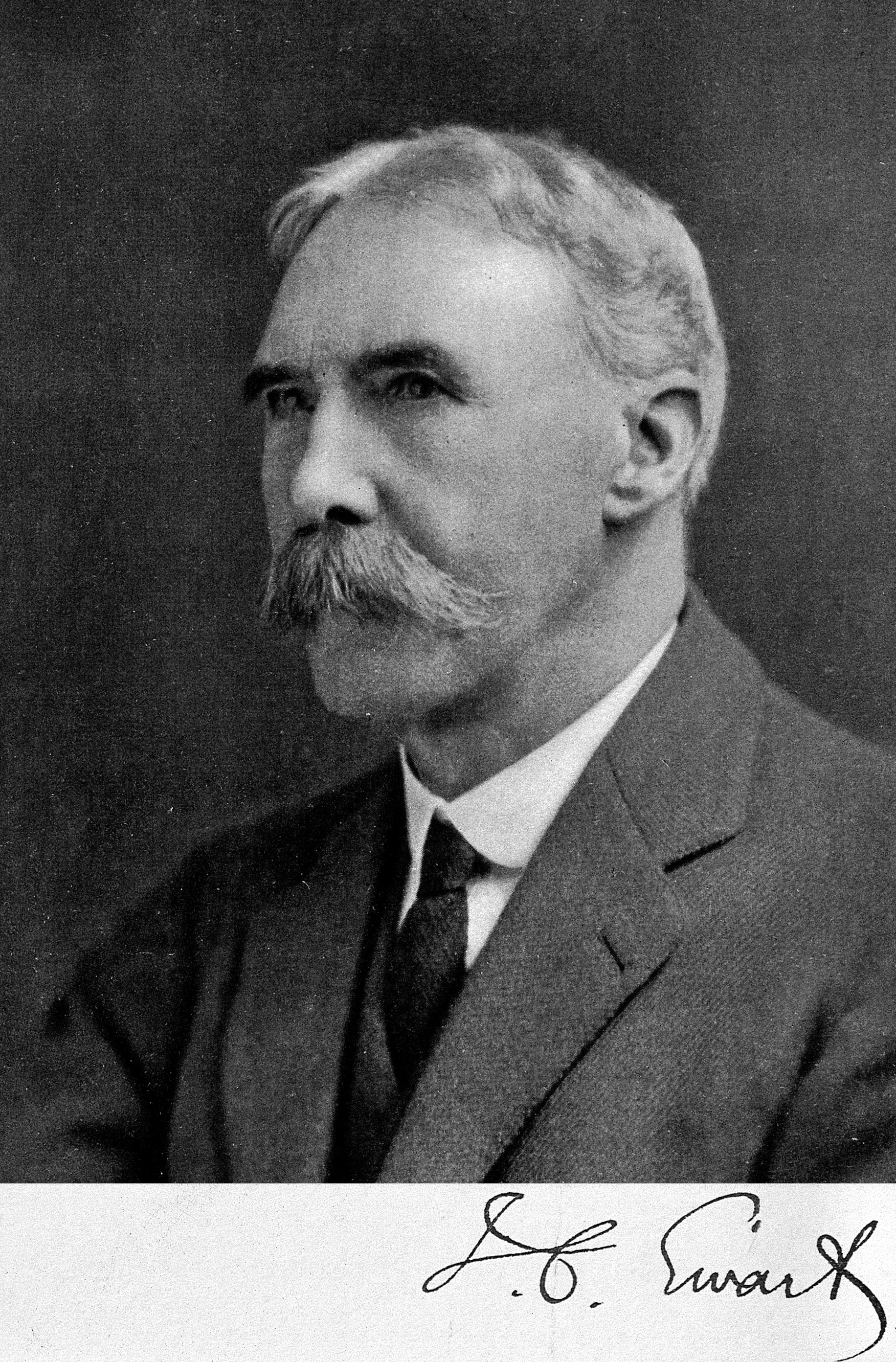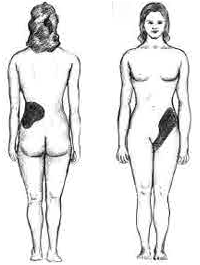|
Samuel George Shattock
Samuel George Shattock FRS (born Samuel George Betty, 3 November 1852, Camden Town – 11 May 1924) was a British pathologist. After education at Prior Park College, Bath, S. G. Betty matriculated in 1867 at University College School and in 1868 at the University of London. In October 1868 he became a medical student at University College Hospital. There he won the Liston Gold Medal for 1875 (awarded at the end of the summer session to the pupil "who has most distinguished himself by reports and observations on the surgical cases in the hospital"). In 1876 under the supervision of Marcus Beck, he started a descriptive catalogue of the University College Hospital's preparations of surgical pathology. In December 1881, Samuel George Betty was elected a Fellow of the Royal College of Surgeons, but he then changed his name to Samuel George Shattock, giving as a reason that the Shattock side of his family seemed likely to suffer extinction and the change might preserve the family name ... [...More Info...] [...Related Items...] OR: [Wikipedia] [Google] [Baidu] |
Fellow Of The Royal Society
Fellowship of the Royal Society (FRS, ForMemRS and HonFRS) is an award granted by the judges of the Royal Society of London to individuals who have made a "substantial contribution to the improvement of natural knowledge, including mathematics, engineering science, and medical science". Fellowship of the Society, the oldest known scientific academy in continuous existence, is a significant honour. It has been awarded to many eminent scientists throughout history, including Isaac Newton (1672), Michael Faraday (1824), Charles Darwin (1839), Ernest Rutherford (1903), Srinivasa Ramanujan (1918), Albert Einstein (1921), Paul Dirac (1930), Winston Churchill (1941), Subrahmanyan Chandrasekhar (1944), Dorothy Hodgkin (1947), Alan Turing (1951), Lise Meitner (1955) and Francis Crick (1959). More recently, fellowship has been awarded to Stephen Hawking (1974), David Attenborough (1983), Tim Hunt (1991), Elizabeth Blackburn (1992), Tim Berners-Lee (2001), Venki Ramakrishnan ( ... [...More Info...] [...Related Items...] OR: [Wikipedia] [Google] [Baidu] |
Prior Park College
Prior Park College is a mixed Roman Catholic public school for both day and boarding students. Situated on a hill overlooking the city of Bath, Somerset, in southwest England, Prior Park has been designated by Historic England as a Grade I listed building. The adjoining Prior Park Landscape Garden was donated by Prior Park to the National Trust. The Prior Foundation consists of Prior Park College, the Paragon Junior School (Bath) and Prior Park School Gibraltar. Overview Founded in 1830 to be England's first Catholic university, Prior Park College has remained a Roman Catholic school. It was established by the Benedictine, Bishop Baines, as a seminary, and provides co-educational schooling for students aged 11 to 18 in the Catholic tradition and ecumenical spirit. In 2008, students achieved the best A-level results in the history of the school, with over one fifth of all students getting three A's and 77% receiving A and B grades. In July 2009, Giles Mercer retired. He ... [...More Info...] [...Related Items...] OR: [Wikipedia] [Google] [Baidu] |
Bath, Somerset
Bath () is a city in the Bath and North East Somerset unitary area in the ceremonial counties of England, county of Somerset, England, known for and named after its Roman Baths (Bath), Roman-built baths. At the 2021 Census, the population was 101,557. Bath is in the valley of the River Avon (Bristol), River Avon, west of London and southeast of Bristol. The city became a World Heritage Site in 1987, and was later added to the transnational World Heritage Site known as the "Great Spa Towns of Europe" in 2021. Bath is also the largest city and settlement in Somerset. The city became a spa with the Latin name ' ("the waters of Sulis") 60 AD when the Romans built Roman Baths (Bath), baths and a temple in the valley of the River Avon, although List of geothermal springs in the United Kingdom, hot springs were known even before then. Bath Abbey was founded in the 7th century and became a religious centre; the building was rebuilt in the 12th and 16th centuries. In the 17th ce ... [...More Info...] [...Related Items...] OR: [Wikipedia] [Google] [Baidu] |
University College Hospital
University College Hospital (UCH) is a teaching hospital in the Fitzrovia area of the London Borough of Camden, England. The hospital, which was founded as the North London Hospital in 1834, is closely associated with University College London (UCL), whose main campus is situated next door. The hospital is part of the University College London Hospitals NHS Foundation Trust The hospital is on the south side of Euston Road and its tower faces Euston Square tube station on the east side. Warren Street tube station lies immediately west and the major Euston terminus station is beyond 200 metres east, just beyond Euston Square Gardens. History In 1826 the London University began emphasising the importance of having medical schools attached to hospitals. Before the hospital opened, only Oxford and Cambridge universities offered medical degrees, and as a consequence relatively few doctors actually had degrees. The hospital was founded as the North London Hospital in 1834 in o ... [...More Info...] [...Related Items...] OR: [Wikipedia] [Google] [Baidu] |
James Cossar Ewart
James Cossar Ewart FRS FRSE (26 November 1851 – 31 December 1933) was a Scottish zoologist. He performed breeding experiments with horses and zebras which disproved earlier theories of heredity. Life Ewart was born in Penicuik, Midlothian, Scotland, the son of Jean Cossar and John Ewart, a joiner. He studied medicine from 1871 to 1874 at the University of Edinburgh where he graduated with an MB ChB. After graduation, he became an anatomy demonstrator under William Turner and then held the position of Curator of the Zoological Museum at University College, London, where he assisted Ray Lankester (later director of the Natural History Museum) by making zoological preparations for the museum and providing teaching support for Lankester's course in practical zoology. In 1878 he returned to Scotland to take a post of Regius Professor of Natural History at the University of Aberdeen from where he moved to the University of Edinburgh in 1882, staying in the post until 1927. I ... [...More Info...] [...Related Items...] OR: [Wikipedia] [Google] [Baidu] |
St Thomas's Hospital
St Thomas' Hospital is a large NHS teaching hospital in Central London, England. It is one of the institutions that compose the King's Health Partners, an academic health science centre. Administratively part of the Guy's and St Thomas' NHS Foundation Trust, together with Guy's Hospital, King's College Hospital, University Hospital Lewisham, and Queen Elizabeth Hospital, it provides the location of the King's College London GKT School of Medical Education. Originally located in Southwark, but based in Lambeth since 1871, the hospital has provided healthcare freely or under charitable auspices since the 12th century. It is one of London's most famous hospitals, associated with people such as Sir Astley Cooper, William Cheselden, Florence Nightingale, Alicia Lloyd Still, Linda Richards, Edmund Montgomery, Agnes Elizabeth Jones and Sir Harold Ridley. It is a prominent London landmark – largely due to its location on the opposite bank of the River Thames to the Houses of ... [...More Info...] [...Related Items...] OR: [Wikipedia] [Google] [Baidu] |
Paleopathology
Paleopathology, also spelled palaeopathology, is the study of ancient diseases and injuries in organisms through the examination of fossils, mummified tissue, skeletal remains, and analysis of coprolites. Specific sources in the study of ancient human diseases may include early documents, illustrations from early books, painting and sculpture from the past. Looking at the individual roots of the word "Paleopathology" can give a basic definition of what it encompasses. "Paleo-" refers to "ancient, early, prehistoric, primitive, fossil." The suffix "-pathology" comes from the Latin ''pathologia'' meaning "study of disease." Through the analysis of the aforementioned things, information on the evolution of diseases as well as how past civilizations treated conditions are both valuable byproducts. Studies have historically focused on humans, but there is no evidence that humans are more prone to pathologies than any other animal. Paleopathology is an interdisciplinary science, mean ... [...More Info...] [...Related Items...] OR: [Wikipedia] [Google] [Baidu] |
Kidney Stone
Kidney stone disease, also known as nephrolithiasis or urolithiasis, is a crystallopathy where a solid piece of material (kidney stone) develops in the urinary tract. Kidney stones typically form in the kidney and leave the body in the urine stream. A small stone may pass without causing symptoms. If a stone grows to more than , it can cause blockage of the ureter, resulting in sharp and severe pain in the lower back or abdomen. A stone may also result in blood in the urine, vomiting, or painful urination. About half of people who have had a kidney stone will have another within ten years. Most stones form by a combination of genetics and environmental factors. Risk factors include high urine calcium levels, obesity, certain foods, some medications, calcium supplements, hyperparathyroidism, gout and not drinking enough fluids. Stones form in the kidney when minerals in urine are at high concentration. The diagnosis is usually based on symptoms, urine testing, and me ... [...More Info...] [...Related Items...] OR: [Wikipedia] [Google] [Baidu] |
Grafton Elliot Smith
Sir Grafton Elliot Smith (15 August 1871 – 1 January 1937) was an Australian- British anatomist, Egyptologist and a proponent of the hyperdiffusionist view of prehistory. He believed in the idea that cultural innovations occur only once and that they spread geographically. Based on this, he traced the origins of many cultural and traditional practices across the world, including the New World, to ideas that he believed came from Egypt and in some instances from Asia. An expert on brain anatomy, he was one of the first to study Egyptian mummies using radiological techniques. He took an interest in extinct humanoids and was embroiled in controversy over the authenticity of the Piltdown Man. Professional career Smith was born in Grafton, New South Wales to Stephen Sheldrick Smith who had moved to Australia from London in 1860 and Mary Jane, née Evans. He received his early education from Grafton Public School where his father was headmaster. When the family moved to Sydney i ... [...More Info...] [...Related Items...] OR: [Wikipedia] [Google] [Baidu] |
Merneptah
Merneptah or Merenptah (reigned July or August 1213 BC – May 2, 1203 BC) was the fourth pharaoh of the Nineteenth Dynasty of Ancient Egypt. He ruled Egypt for almost ten years, from late July or early August 1213 BC until his death on May 2, 1203 BC, according to contemporary historical records. Jürgen von Beckerath, ''Chronologie des Pharaonischen Ägypten'', Mainz, (1997), pp.190 He was the thirteenth son of Ramesses II,Gae Callender, ''The Eye Of Horus: A History of Ancient Egypt'', Longman Cheshire (1993), p.263 only coming to power because all his older brothers had died, including his full brother Khaemwaset or Khaemwase. By the time he ascended to the throne, he was probably around seventy years old. He is perhaps best known for his victory stele, featuring the first known mention of the name Israel. His throne name was ''Ba-en-re Mery-netjeru'', which means "The Soul of Ra, Beloved of the Gods". Family Merneptah was likely the fourth child born to Isetnofret I a ... [...More Info...] [...Related Items...] OR: [Wikipedia] [Google] [Baidu] |
1852 Births
Year 185 ( CLXXXV) was a common year starting on Friday (link will display the full calendar) of the Julian calendar. At the time, it was known as the Year of the Consulship of Lascivius and Atilius (or, less frequently, year 938 ''Ab urbe condita''). The denomination 185 for this year has been used since the early medieval period, when the Anno Domini calendar era became the prevalent method in Europe for naming years. Events By place Roman Empire * Nobles of Britain demand that Emperor Commodus rescind all power given to Tigidius Perennis, who is eventually executed. * Publius Helvius Pertinax is made governor of Britain and quells a mutiny of the British Roman legions who wanted him to become emperor. The disgruntled usurpers go on to attempt to assassinate the governor. * Tigidius Perennis, his family and many others are executed for conspiring against Commodus. * Commodus drains Rome's treasury to put on gladiatorial spectacles and confiscates property t ... [...More Info...] [...Related Items...] OR: [Wikipedia] [Google] [Baidu] |
1924 Deaths
Nineteen or 19 may refer to: * 19 (number), the natural number following 18 and preceding 20 * one of the years 19 BC, AD 19, 1919, 2019 Films * ''19'' (film), a 2001 Japanese film * ''Nineteen'' (film), a 1987 science fiction film Music * 19 (band), a Japanese pop music duo Albums * ''19'' (Adele album), 2008 * ''19'', a 2003 album by Alsou * ''19'', a 2006 album by Evan Yo * ''19'', a 2018 album by MHD * ''19'', one half of the double album '' 63/19'' by Kool A.D. * '' Number Nineteen'', a 1971 album by American jazz pianist Mal Waldron * ''XIX'' (EP), a 2019 EP by 1the9 Songs * "19" (song), a 1985 song by British musician Paul Hardcastle. * "Nineteen", a song by Bad4Good from the 1992 album ''Refugee'' * "Nineteen", a song by Karma to Burn from the 2001 album ''Almost Heathen''. * "Nineteen" (song), a 2007 song by American singer Billy Ray Cyrus. * "Nineteen", a song by Tegan and Sara from the 2007 album '' The Con''. * "XIX" (song), a 2014 song by ... [...More Info...] [...Related Items...] OR: [Wikipedia] [Google] [Baidu] |







